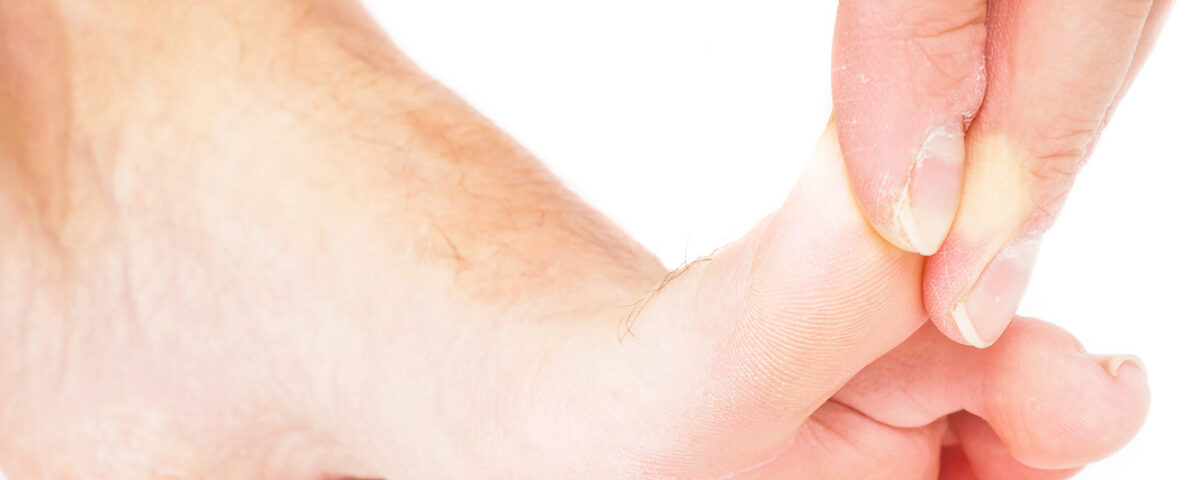Why is my big toe numb?

StemCare™ Payment Plans Now Available!
November 12, 2019Why is my big toe numb? We hear this question all the time, and while it may seem like a minor problem, the causes could point to big issues. In this article, we are going to explore the cause of toe numbness and other common toe symptoms.
Understanding the anatomy and why it’s important.
We use them every day; our feet are arguably the most important appendage we have. Studies suggest that we don’t simply lose our independence as we age, but rather a lack of foot health and speed make us more susceptible to falls and injuries and thus cause us to require assistance. The ability to get our foot out in front of us as we lose balance, knowing where the ground is without looking, and walking unassisted all play a major impact on whether we can maintain our independence as we age.
Our toes help us to maintain balance as we naturally shift forwards and backwards. As useless as they may seem, our toes play a very important role in our mobility, balance, and overall health.
“If you have symptoms in your feet, do not ignore them.”

The human foot has five toes (phalanges). Each toe has three phalanx bones, the proximal, middle and distal. The big toe is the exception. (Latin: Hallux). All of our toes are the end of the line for our peripheral nervous system, the network of nerves and ganglia outside the brain and spinal cord. The primary function of the peripheral nervous system is to connect the brain to our limbs and organs; This serves as a relay between the brain and the rest of our body.
The big toe acts as a beacon for dangers that we might be unaware of. Due to the importance of this appendage and its long-term health impact, it is important to identify symptoms and their causes early on.
Let’s explore some common symptoms and what they could mean.
Cold Toes
If your toes are often cold, it is generally a sign of poor circulation. On the surface this may not seem like a big deal, but it is not something to take lightly.
Circulation is one of the most important functions of the human body. Not only does the process bring in fresh blood and oxygen, but it also helps to clear the cellular waste. It is very important to figure out just what the culprit might be.
Some of the more likely causes for poor circulation are smoking and high blood pressure. Other causes may be more serious like heart disease. In some cases, uncontrolled diabetes can also make your feet feel cold. Other possible causes include hypothyroidism and anemia.
Toes turning upward and/or tight
This condition is often seen in athletic sprains and women who wear high heel shoes. It is usually the result of a sprain to the joint at the bottom of your big toe. Swelling can make the joint stiff and tight, often pulling the toe upward.
More commonly the rigidity of the big toe is the result of arthritis setting in, particularly if you are 50+ years old.
Other less common causes have been linked to heart disease, lung disease, or Crohn’s disease. Regular checkups should help you determine if this is the case.
Sharp Pain/ Electrical Pains/ Stabbing / Shooting pains / Tingling
This is generally a sign of a condition called peripheral neuropathy. Neuropathy is a symptomatic condition brought on by a decrease in blood flow over a prolonged duration of time. It is characterized by sharp pains, tingling, aching, the sensation that you are walking on pins, and/or numbness.
Neuropathy can be brought on by several conditions. Some of the more common include diabetes, injury, chemotherapy, and obesity. Although we’ve named a few, research has shown that there are literally hundreds of conditions that may result in neuropathy.
Neuropathy is what is known as a symptomatic, progressive neurodegenerative disease. Decreased blood flow causes the protective layer surrounding your toe’s nerves to decay and the nerve to become exposed. The exposed nerve sends signals of pain to the brain, thus the tingling and shooting pains.
Little can be done to improve the condition outside of regenerative efforts. Common treatments include anti-seizure medications such as Neurontin that limit the signals in the brain. Obvious complications can occur, and it is widely regarded as band-aiding the issue.
Stem Cell Therapy has been shown to regrow microcapillaries damaged by neuropathy, as well as the repair of the myelin sheath (the protective layer surrounding the nerves.) Other promising research has been shown by utilizing lasers to treat the area causing the body to send reparative growth factors, antibodies, and its own stem cells to the area. Laser therapies can be costly, and the efficacy is still in question.
Blue Toes
Blue, red, and even white coloration to the big toe can be a sign of a disease known as Reynaud’s Disease.
Reynaud’s Disease isn’t particularly dangerous and is often the response to our body dealing with stress or severe cold.
In Reynaud’s Disease, the smaller arteries that supply blood to our skin narrow, limiting blood circulation to skin of the big toe. This is what is known as vasospasm. It is generally not a cause for alarm, nor is it a progressive disease.
In extremely rare cases, the constricted blood vessels can lead to a completely blocked artery which can lead to sores (skin ulcers) or dead tissue (gangrene). In these cases, it becomes harder to treat. Even rarer still, extreme untreated cases might require amputation of the affected toe, although this is almost never the case.
Aching Toes
In some cases, the big toe aches without any history of complications. This could be caused by the onset of arthritis, but more commonly is associated with a bone bruise.
When we damage the blood vessels in our bones, they may leak blood and fluid. This is called a bone bruise. Several things can cause bruising to the bone; an injury that you were unaware of, high volume of stress (high heels), repetitive movements, or Gout.
Gout is an inflammatory arthritis. It's caused by a buildup of uric acid crystals in your joint.
In the case of Gout as well as with a bone bruise, your doctor may advise RICE (Rest, Ice, Compression, Elevation). They may also advise pain medication to help alleviate some of the discomfort.
Itchy Toes
Scaly or itchy toes can often be a sign of a fungal infection more commonly referred to as athlete’s foot. There are many over-the-counter antifungal creams that can easily treat this condition.
Other causes could be due to a reaction to chemicals or skin care products called contact dermatitis. This can cause itching too, along with redness and dry patches. If the skin on an itchy toe is thick and bumpy, it may be a condition called psoriasis (an over-reaction of the immune system.) Medicated creams can help relieve the symptoms.
Conclusion
While having numbness or pain in the toes is a problem, there is some good news --the fact that you are aware of the issue and seeking answers means that you are that much closer to fixing it!
Most of the time the causes can be identified and quickly treated. Sometimes, the issue can be due to more complicated disorders which is why it is important to talk with your doctor about your symptoms and find a treatment that is right for you!

